Let there be light
Imagine: you came home in the evening, and in the apartment there are only two brilliant cat eyes. It's dark, even though your eye is poked out. You are highlighting your way with a mobile phone and trying to remember where the candles and matches are and whether they are at all. Around you, home and bewildered, sadly wander around, the neighbor is doomed to knock to ask if this is the case everywhere. This is the end of the world, or rather the temporary blackout in a single house of a big city.
Life without light is impossible in principle: there will be no photosynthesis, many biochemical reactions will stop, the vision of humans and animals will be completely useless. And at the same time, we are all with you - victims of light pollution, which conquered big cities around the world. So evil or good artificial light, where is its measure and how does it affect human health? We found a reason to talk about it.
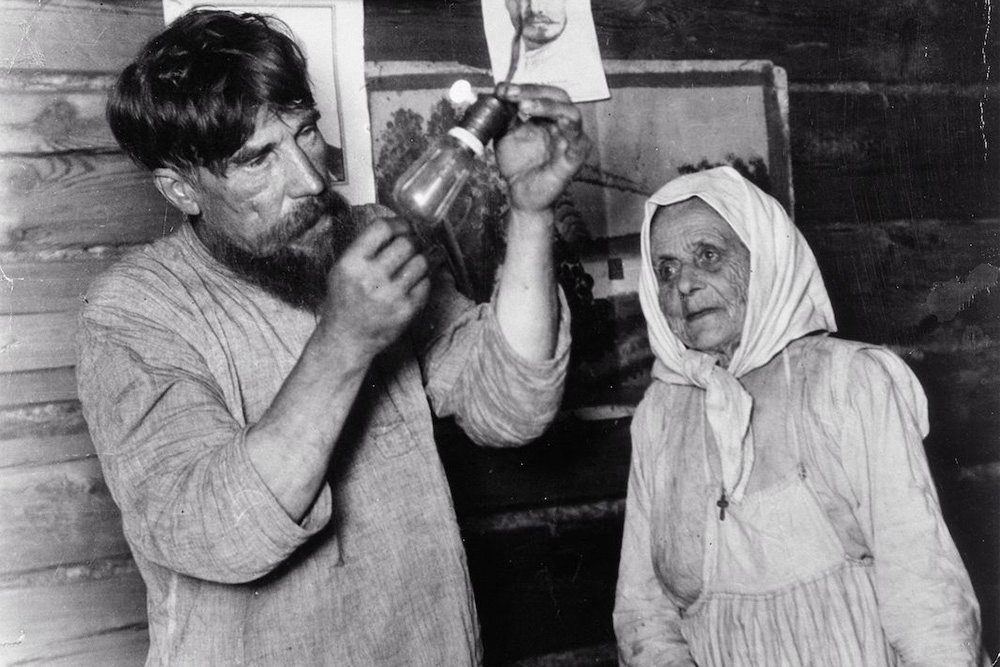
')
We collected some of the most popular questions about light and decided to shed light on them - in the literal sense of the word, because the lamps occupy a huge share of the packages flying from Gearbest all over the world (this is a pun!). Well, let's get the light?
The first human organ that “collides” with light is the eyes, an extremely sensitive and valuable organ, through which we perceive most of the information. However, the eyes do not catch what is able to "catch" the brain. In particular, the flickering of light, imperceptible to the eyes, for 4-8 hours can cause fatigue, headache, nausea and psychological disorders (depression, apathy, irritability). Therefore, for example, LED lamps with a ripple factor of about 5% are preferable to incandescent lamps with their 15-20%. But quality lamps have a ripple rate of up to 1%.
Similarly, the "bluish" cold light with temperatures ranging from 3500 to 6400 K inhibits the production of melatonin in the body. Meanwhile, in a number of office premises they strive to create just such “working” conditions. Of course, this is an erroneous action - such stimulation will only lead to insomnia, decreased performance and increased susceptibility to infections and allergens due to reduced immunity.
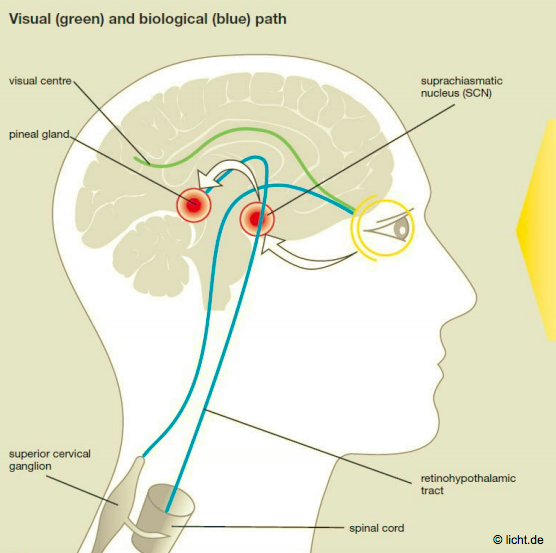
Light affects the visual (sensory), biological and emotional sphere of life of each person. This is due to circadian cycles.
If you greatly simplify, then the light hits the retina of the eye, from which the signal to the brain. Depending on the characteristics of light, the signal is processed by the brain and further the secretion of certain hormones is initiated or suppressed. So, if there is not enough light, melatonin, a sleep hormone, is secreted. On the contrary, if there is too much light, a stress hormone is produced - cortisol. All this hormone carousel determines the so-called circadian rhythms - cyclical fluctuations in the intensity of biological processes associated with the change of time of day.
By the way, the Xiaomi PHILIPS Zhirui bedside lamp with an intelligent control system and a magnificent light panel imitating almost dawn in the village will make friends with circadian rhythms, and in fact is an inexpensive (only $ 19.99) LED tape with warm yellow light. And slippers do not need to look :)
Circadian or circadian rhythms are a scientific term proven in biology. Sometimes they are called the biological clock of a person (do not confuse it with the biological clock of individual human organs - this is just a “fflomistika”, or rather, a process not recognized by official science). It is with circadian rhythms that such manifestations of vital activity within a day are associated with sleep, hunger, changes in body temperature and blood pressure, growth processes, and the timing of the production of the hormones melatonin and cortisol.
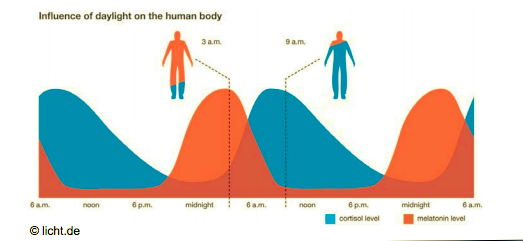
Schedule of production of cortisol and melatonin in humans during the day
Circadian rhythms are directly related to light - it is the change of day and night that determines the state of the human body.
However, in modern conditions, when we need to work and generally live an active lifestyle (for example, drive a car) not only during daylight hours, it becomes necessary to somehow deceive our circadian rhythms. And artificial lighting is a great helper in maintaining the health and vigor of a modern person. For example, you can adjust your LED lamp so that the body begins to produce melatonin, which in turn will inform the brain that night is falling and it’s time to fall asleep. But reading information from the screens of gadgets (tablets, cell phones, laptops) can just lead to insomnia and difficulty falling asleep, since the retina tells the brain about the "wrong" light.

One of the main characters of the article is melatonin, a sleep hormone.
“Light affects our daily rhythms more than any drug,” says Charles A. Zeisler, MD, director of sleep medicine, Harvard Medical School. And he is right.
With all the perfection of electrical appliances and the variety of choice of means of illumination, natural sunlight clearly wins over artificial. It is a matter of biology - the very circadian rhythms "obey" precisely the sunlight and adapt to the dynamism of light and the spectral composition of the radiation.
Of course, modern man can not refuse artificial lighting. At the very least, it can harm mental and somatic health. Judge for yourself:
The required level of illumination for a person is 1000-1500 lux (lux is a unit of measurement of illumination). If natural sunlight is not able to cope with the task, you need the help of lamps. At the same time, the lighting should be organized, general and local. If you turn on the light above the book or the backlight on the laptop in complete darkness and periodically take your eyes off and look into this very darkness, your eyes will be extremely uncomfortable. Such a sharp adjustment should not be.
And yes, we are chronically lacking light: for example, the amount of light that we receive within 16 hours in a conventional office or at home can be compared to one hour of being under the sun on a fine day. Hence the growing problems of the synthesis of vitamins D8 and D2.
And we advise you to try the already legendary YEELIGHT lamps - for $ 20.99 you will receive a whole mini-system that will provide you with exactly the light that you need at the moment. These are the real pets of our customers. By the way, there are sets of such lamps - just three, what is needed for the room.
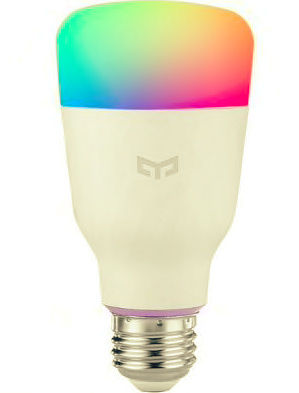
Of course not. We also saw publications on this topic, but in them experiments were made on lamps similar in characteristics to those used for drying gel polish in nail salons. In fact, LED lamps are harmless and, moreover, environmentally friendly light sources that cannot harm the level of UV radiation they have. Moreover, large manufacturers are striving to meet the standards in order not to lose the world market. In general, LED lamps are harmless if we are talking about a relatively healthy person (because, for example, a person with eye diseases may experience a negative impact - but to the same extent that he experiences it from any light source, including the sun).
However, there are nuances that must be considered. For example, the LED can cause irreparable damage to the cells of the retina of the human eye - we are talking about the so-called "cold" blue light. Therefore, it is better to check the presence of a filter in your lamp or choose a lamp with the ability to control the color temperature.
Yes there is. You and I live in large cities, where lighting follows us day and night - in fact, we are constantly exposed to light, forcibly illuminate ourselves with various devices and wearable electronics, do not pay attention to light hygiene. As a result, a person has a sleep disorder, immunity decreases, there are problems with eyesight, there are feelings "over light" and "over dark" when a person is disoriented and gets into a traumatic situation. These factors accumulate, like a snowball and following one after another, negatively affect human health.
Civilization will have to deal with the lighting challenge:
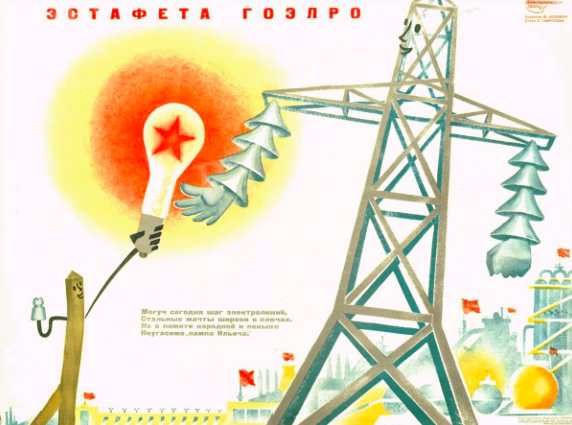
Today's power line is powerful,
Steel masts are wide at the shoulders.
But in the memory of the people today
Undying lamp Ilyich. (Text from the Soviet poster)
In general, these lamps are good for everyone: now they are inexpensive, they do not eat electricity, they do not heat up (it’s important for children (they don’t burn themselves) and cats (they’re upset - you don’t get warm)), they are safe from the point of view of components, durable (sometimes plastic) , perfectly diffuse the light.
In addition, they:
Pay attention to the articles by Alexei Nadyozhin aka AlexeyNadezhin . But in short, for an un-advanced consumer it is enough to know:
Be sure to test the lamp in the store, not only for breakage, but also for formal comfort / discomfort.
Light is a cosiness, comfort, warmth, productivity. Light is a good mood and really good morning. Light is health. Take care of him, let him into the house and you will literally feel with your skin how cool is the sho!
We have, as always, some interesting things. By the arrival of autumn and darkness in our cities, we have prepared a special sale, from which you will definitely become brighter.
Everyone out of the twilight!
Life without light is impossible in principle: there will be no photosynthesis, many biochemical reactions will stop, the vision of humans and animals will be completely useless. And at the same time, we are all with you - victims of light pollution, which conquered big cities around the world. So evil or good artificial light, where is its measure and how does it affect human health? We found a reason to talk about it.

')
We collected some of the most popular questions about light and decided to shed light on them - in the literal sense of the word, because the lamps occupy a huge share of the packages flying from Gearbest all over the world (this is a pun!). Well, let's get the light?
Why so much attention is paid to the quality of light, namely, its characteristics: flicker frequency, temperature, light intensity? Light, bright and good.
The first human organ that “collides” with light is the eyes, an extremely sensitive and valuable organ, through which we perceive most of the information. However, the eyes do not catch what is able to "catch" the brain. In particular, the flickering of light, imperceptible to the eyes, for 4-8 hours can cause fatigue, headache, nausea and psychological disorders (depression, apathy, irritability). Therefore, for example, LED lamps with a ripple factor of about 5% are preferable to incandescent lamps with their 15-20%. But quality lamps have a ripple rate of up to 1%.
Similarly, the "bluish" cold light with temperatures ranging from 3500 to 6400 K inhibits the production of melatonin in the body. Meanwhile, in a number of office premises they strive to create just such “working” conditions. Of course, this is an erroneous action - such stimulation will only lead to insomnia, decreased performance and increased susceptibility to infections and allergens due to reduced immunity.

Light affects the visual (sensory), biological and emotional sphere of life of each person. This is due to circadian cycles.
If you greatly simplify, then the light hits the retina of the eye, from which the signal to the brain. Depending on the characteristics of light, the signal is processed by the brain and further the secretion of certain hormones is initiated or suppressed. So, if there is not enough light, melatonin, a sleep hormone, is secreted. On the contrary, if there is too much light, a stress hormone is produced - cortisol. All this hormone carousel determines the so-called circadian rhythms - cyclical fluctuations in the intensity of biological processes associated with the change of time of day.
By the way, the Xiaomi PHILIPS Zhirui bedside lamp with an intelligent control system and a magnificent light panel imitating almost dawn in the village will make friends with circadian rhythms, and in fact is an inexpensive (only $ 19.99) LED tape with warm yellow light. And slippers do not need to look :)
Is circadian rhythms a medical term or something from the category of aura and biofield? And where does the light?
Circadian or circadian rhythms are a scientific term proven in biology. Sometimes they are called the biological clock of a person (do not confuse it with the biological clock of individual human organs - this is just a “fflomistika”, or rather, a process not recognized by official science). It is with circadian rhythms that such manifestations of vital activity within a day are associated with sleep, hunger, changes in body temperature and blood pressure, growth processes, and the timing of the production of the hormones melatonin and cortisol.

Schedule of production of cortisol and melatonin in humans during the day
Circadian rhythms are directly related to light - it is the change of day and night that determines the state of the human body.
However, in modern conditions, when we need to work and generally live an active lifestyle (for example, drive a car) not only during daylight hours, it becomes necessary to somehow deceive our circadian rhythms. And artificial lighting is a great helper in maintaining the health and vigor of a modern person. For example, you can adjust your LED lamp so that the body begins to produce melatonin, which in turn will inform the brain that night is falling and it’s time to fall asleep. But reading information from the screens of gadgets (tablets, cell phones, laptops) can just lead to insomnia and difficulty falling asleep, since the retina tells the brain about the "wrong" light.

One of the main characters of the article is melatonin, a sleep hormone.
“Light affects our daily rhythms more than any drug,” says Charles A. Zeisler, MD, director of sleep medicine, Harvard Medical School. And he is right.
Why not hang thick curtains and blinds to shut off the sunlight as much as possible and set up the one that optimally affects the body? Lamps on the relay, different levels of heat and intensity of the flow - and here I am independent of the weather!
With all the perfection of electrical appliances and the variety of choice of means of illumination, natural sunlight clearly wins over artificial. It is a matter of biology - the very circadian rhythms "obey" precisely the sunlight and adapt to the dynamism of light and the spectral composition of the radiation.
So why not give up artificial light, why these troubles and such a range of lighting devices?
Of course, modern man can not refuse artificial lighting. At the very least, it can harm mental and somatic health. Judge for yourself:
- From 24 hours a day, we wake up more time than we sleep (alas, some have an active time of 18-20 hours). Of course, light day lasts less. If we are talking about Russia, then most of the year we are dealing with the shortest possible light day.
- There are quite large groups of people who work in shifts, and are forced to work at night. In industrial regions and districts it can be 20-50% of the population.
- In some office centers there are whole working rooms and offices without windows or with very narrow windows, the sunlight hardly looks at them. Yes, it is no secret, some rooms in the apartments are also quite dark - for example, in the nineties of the 70s, where the room is preceded by a balcony, later closed by the owners to the state of a loggia.
The required level of illumination for a person is 1000-1500 lux (lux is a unit of measurement of illumination). If natural sunlight is not able to cope with the task, you need the help of lamps. At the same time, the lighting should be organized, general and local. If you turn on the light above the book or the backlight on the laptop in complete darkness and periodically take your eyes off and look into this very darkness, your eyes will be extremely uncomfortable. Such a sharp adjustment should not be.
And yes, we are chronically lacking light: for example, the amount of light that we receive within 16 hours in a conventional office or at home can be compared to one hour of being under the sun on a fine day. Hence the growing problems of the synthesis of vitamins D8 and D2.
And we advise you to try the already legendary YEELIGHT lamps - for $ 20.99 you will receive a whole mini-system that will provide you with exactly the light that you need at the moment. These are the real pets of our customers. By the way, there are sets of such lamps - just three, what is needed for the room.

Are LED lamps harmful to health?
Of course not. We also saw publications on this topic, but in them experiments were made on lamps similar in characteristics to those used for drying gel polish in nail salons. In fact, LED lamps are harmless and, moreover, environmentally friendly light sources that cannot harm the level of UV radiation they have. Moreover, large manufacturers are striving to meet the standards in order not to lose the world market. In general, LED lamps are harmless if we are talking about a relatively healthy person (because, for example, a person with eye diseases may experience a negative impact - but to the same extent that he experiences it from any light source, including the sun).
However, there are nuances that must be considered. For example, the LED can cause irreparable damage to the cells of the retina of the human eye - we are talking about the so-called "cold" blue light. Therefore, it is better to check the presence of a filter in your lamp or choose a lamp with the ability to control the color temperature.
Is there light pollution?
Yes there is. You and I live in large cities, where lighting follows us day and night - in fact, we are constantly exposed to light, forcibly illuminate ourselves with various devices and wearable electronics, do not pay attention to light hygiene. As a result, a person has a sleep disorder, immunity decreases, there are problems with eyesight, there are feelings "over light" and "over dark" when a person is disoriented and gets into a traumatic situation. These factors accumulate, like a snowball and following one after another, negatively affect human health.
Civilization will have to deal with the lighting challenge:
- Users - choose those devices and lamps that can have a positive or neutral effect (for example, a desk lamp from Xiaomi ), do not chase for cheap fakes that do not meet the stated characteristics;
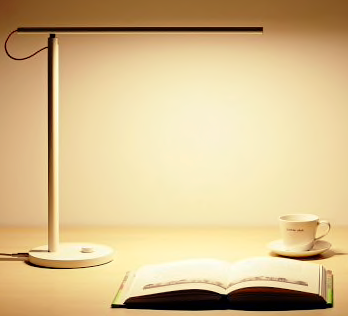
- Manufacturers - be responsible in their design and construction of lighting devices, use precise equipment to reduce light pollution, use optimal color temperatures;
- We all need to organize personal and workplace hygiene of light in space (this is not only a steep light bulb or a timed switch, but also the color of the walls, the location of interior items, cleanliness of windows, etc.).
How to organize the right lighting?
- Try to ensure a uniform dispersion of light, as the light intensity fluctuations lead to poor adaptation. In the home or office, this can not lead to tragedy, but gradually causes irritability and significantly impairs mood and reduces efficiency.
- Choose the correct values:
- Capacity - 1 square. m of the room requires from 10 to 20 W for incandescent lamps and about 7 times less for LED lamps.
- Thermal temperature. Do not be fooled: the higher the temperature in kelvins, the colder the light looks. For home, 2700-3000 K is recommended, for concentrated work - 3500-4000 K.
- Spread the lighting points around the room. If you have a large elongated room, it will be a little one chandelier in the center. It is best to add light to the periphery and combine various lighting devices.
- Put motion sensors in the room so that the light turns on and off independently while moving around the apartment. For such purposes, the Mijia Yeelight lamp is optimally suited - a lamp with a motion sensor and with a gentlest diffused light that will not annoy you at night (as the bright lamps of our apartments do).

- Choose "smart" lamps that can be programmatically adjusted, control the characteristics of light, color, etc. Such solutions will help create the light that is most comfortable for you.
- Use the "dawn" lamp - special gadgets that begin to imitate the dawn during the period of awakening and thereby correctly adjust the body to the working day. It is especially valuable to use such devices in the winter when we all get up and get ready for work at night (from the point of view of the body).

Today's power line is powerful,
Steel masts are wide at the shoulders.
But in the memory of the people today
Undying lamp Ilyich. (Text from the Soviet poster)
What are good LED-lamps?
In general, these lamps are good for everyone: now they are inexpensive, they do not eat electricity, they do not heat up (it’s important for children (they don’t burn themselves) and cats (they’re upset - you don’t get warm)), they are safe from the point of view of components, durable (sometimes plastic) , perfectly diffuse the light.
In addition, they:
- serve for a long time - up to 100,000 hours (about 11 years);
- have a color rendition index of 80-85 units (sunlight 100) - here we are with you and we almost got real sunlight;
- subject to the same illumination, they consume 7 times less electricity than the bulbs of the “old” generation;
- have a high luminous flux power up to 1000 lm, because they do not spend power on heating;
- tolerant of moisture and temperature changes, and some models generally have a degree of moisture resistance and dust protection.
What to look for when choosing a lamp?
Pay attention to the articles by Alexei Nadyozhin aka AlexeyNadezhin . But in short, for an un-advanced consumer it is enough to know:
- Who is the manufacturer. Choose lamps of brands that you know or have heard about. This ensures that the manufacturer strives to meet the standards.
- Color temperature (measured in kelvins, K) - each has its own preferences, but there are roughly such boundaries: 1800-3500 - warm yellow, 3600-5000 - neutral white, blue cold - from 5100.
- Luminous flux - how much lumen accounts for 1 watt. Dim light will lead you to apathy and drowsiness, and too bright with time will cause tearing, burning and feeling of sand in the eyes.
- The angle of dispersion is a very important indicator, which most often ranges from 50 to 120 degrees. You need to choose according to the size of the room and your needs. The angle is smaller and the angle is larger also exist, but they require more expensive prefabricated solutions. The diffused luminous flux is good for illuminating the entire room, and the combined directional light with it is for illuminating the part of the space you need.
Be sure to test the lamp in the store, not only for breakage, but also for formal comfort / discomfort.
Light is a cosiness, comfort, warmth, productivity. Light is a good mood and really good morning. Light is health. Take care of him, let him into the house and you will literally feel with your skin how cool is the sho!
We have, as always, some interesting things. By the arrival of autumn and darkness in our cities, we have prepared a special sale, from which you will definitely become brighter.
- The whole world with crazy discounts in our specials. section (there are also flashlights)
- The best-selling table lamp
- Cute and inexpensive lamp hub
- Very romantic flame imitation lamp
- A sensor that can be used even in the hallway, even in the closet, even in the dressing room and even in the closet
- Three-meter diode tape on batteries - in the New Year and Halloween looks great in different capacities in the office and at home. For $ 1.99 and colleagues is not sinful to please
- Same two meter
Everyone out of the twilight!
Source: https://habr.com/ru/post/424335/
All Articles